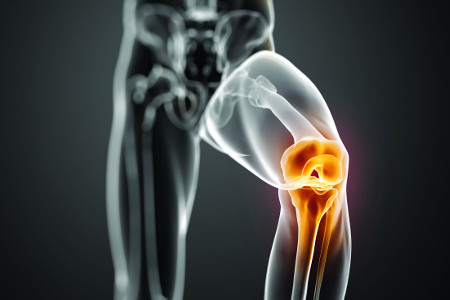


Once considered a high risk, joint replacements are now very common. It is termed as ‘a life-changing procedure’.
Initially conservative management with medicines is administered
At home, assistance is required for basic life activities
Lifestyle modification is necessary as prescribed by physician
INFECTION : If there is any existing infection in the body
OBESITY : If the patient is overweight
NEUROPATHY : In case of any nerve damage
Medical evaluation – Good cardiopulmonary function can withstand anesthesia and to cope with a blood loss of 1000-1500 ml
Standing Anterior-Posterior (AP) View
Lateral View
Patellofemoral (skyline) View
Long leg Radiographs (for assessmal-alignment)
Standing Radiographs with the knee in extension or in 45 degrees of flexion (Rosenberg view)
Complete Blood Count (CBC)
Erythrocyte Sedimentation Rate (ESR)
Serum Electrolytes l Renal Function Studies
Prothrombin Time and Activated Partial Thromboplastin Time (PT/APTT)
Urinalysis
Urine Culture
Antibiotics and antithrombotic prophylaxis are administered approximately 30 minutes before the incision is made.
Mechanical anti-thrombotic devices like struva, stockings and foot pumps are used intra-operatively to prevent thrombosis.
Adequate Hydration & Analgesia : The patient undergoes recovery & is usually observed for a 24-hours period in a High-Dependency Unit. Adequate hydration and analgesia are essential at this time of high physical stress. Analgesia is provided through continuation of the intraoperative epidural, patient-controlled intravenous analgesia or oral analgesia. Cryotherapy is used to reduce post-operative swelling and pain.
Beginning of Knee Movement : At this early stage, the patient begins knee movement, sometimes using a Continuous Passive Motion (CPM), machine & exercises. These are continued under the supervision of a physiotherapist until discharge. Drains are usually removed within 24 hours, and the patient is encouraged to walk on the 2nd postoperative day. Continual improvement is generally observed & discharge occurs in 5-14 days depending on speed of recovery.
Discharge : Discharge is recommended only once wound healing is satisfactory, knee flexion of 90 degrees has been achieved, the patient is considered to be safe and supported in the home environment & no complications are present. Thromboembolism prophylaxis is often continued at home for a period of time. The first outpatient review generally is in 6 weeks to 3 months